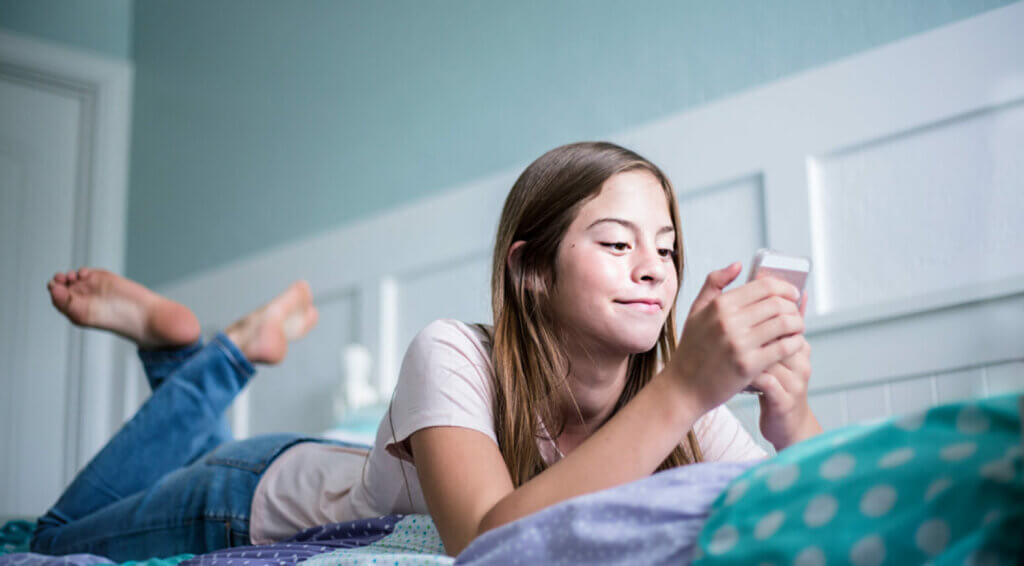Digital wellbeing is about recognising the way going online makes us feel and knowing how to manage this.
Questions you may have
It can be! There are loads of positives to going online and using technology, like being able to stay in touch with friends and family, or learning about what’s going on in the world. Unfortunately there are also negatives – sometimes the time we spend online can leave us feeling stressed, anxious, upset or alone. It’s important to recognise how time online makes you feel, whether it’s good or bad.
As amazing as the internet is, unfortunately there’s always the possibility that you might see something that you didn’t want to. A particular type of content might be triggering for you and make you feel anxious or upset. Perhaps the way other people are behaving online is upsetting or unkind. Sometimes even seemingly harmless content can affect the way we feel – for example if you find yourself comparing your own life to the images and videos shared by others. However it happens, our emotional responses to things we see and hear are part of what makes us human. If something online upsets you, it’s important to remember that it’s not your fault, but there are steps you can take to prevent it from happening again.
The first step is to try to identify the particular things you see or hear that make your online experience a negative one. Once you’ve identified what is upsetting you, consider: can I or should I cut this out of my online experience completely? For example, you could unfollow or block an account that shares things you don’t want to see.
You may decide that it’s important you still engage with the content to some extent e.g. breaking news stories. In this case, can you control how it appears to you or limit the number of times you come across it? This could be achieved by turning off notifications, so the content doesn’t ‘pop-up’ when you’re not expecting it.
Finally, use the positive to outweigh the negative – follow accounts that make you smile or balance your time reading up on news with videos of cute puppies!
Self-care is about actively taking steps to protect your own wellbeing. This could be:
- limiting the negative impact of the things you see online by unfollowing or blocking particular types of content,
- seeking out more positive experiences online,
- balancing your time online with offline activities that help you recharge, get some space and feel better.
Self-care is different for everyone but lots of young people have told us they enjoy: going outside and getting some exercise, spending time with friends and family, taking a long bath, listening to music, reading, baking or other similar hobbies.
Many social media services now provide specific tools designed to support with digital wellbeing. Most of these tools focus on monitoring and managing the amount of time you spend on a device and using a particular service. For example by allowing you to set a time limit, after which an app is temporarily locked. Other tools include the notification settings on your device and reporting or blocking tools.
Turning off push notifications can have a real impact on what content you see throughout the day, whilst being able to report upsetting content online means the safety team can investigate and prevent similar content being posted in the future.
Sometimes the things we see or hear online can feel overwhelming and it’s okay to reach out for help. Having a strong support network of friends, family and other adults you know to support you, is really important. However you may prefer to speak with someone you don’t know, in which case the helpline services provided by Childline and The Mix are available 24 hours a day. Their friendly, fully trained, supportive advisors are happy to talk about anything you want to get off your chest, big or small.
Top Tips
- Be conscious of how going online makes you feel and whether different activities have a positive or negative impact on your emotions.
- Make use of wellbeing tools to manage your time online and manage notifications to make your experiences more positive.
- Make your feed a place of positivity and follow accounts that make you feel good. You can see other posts by visiting profiles and pages directly, instead of them popping up in your feed.
- Practise self-care and make time for yourself. Try out different offline activities and find one that leaves you feeling recharged – whatever works for you!
- Sometimes being online can be overwhelming, but having people who want to support you is invaluable. Reach out if you need to – getting help is a sign of strength, not weakness.
